10 Reasons To Love Grand Teton National Park
Where to stay, what to do, and where to grab some grub in the Tetons…Because they’re real, and they’re spectacular.
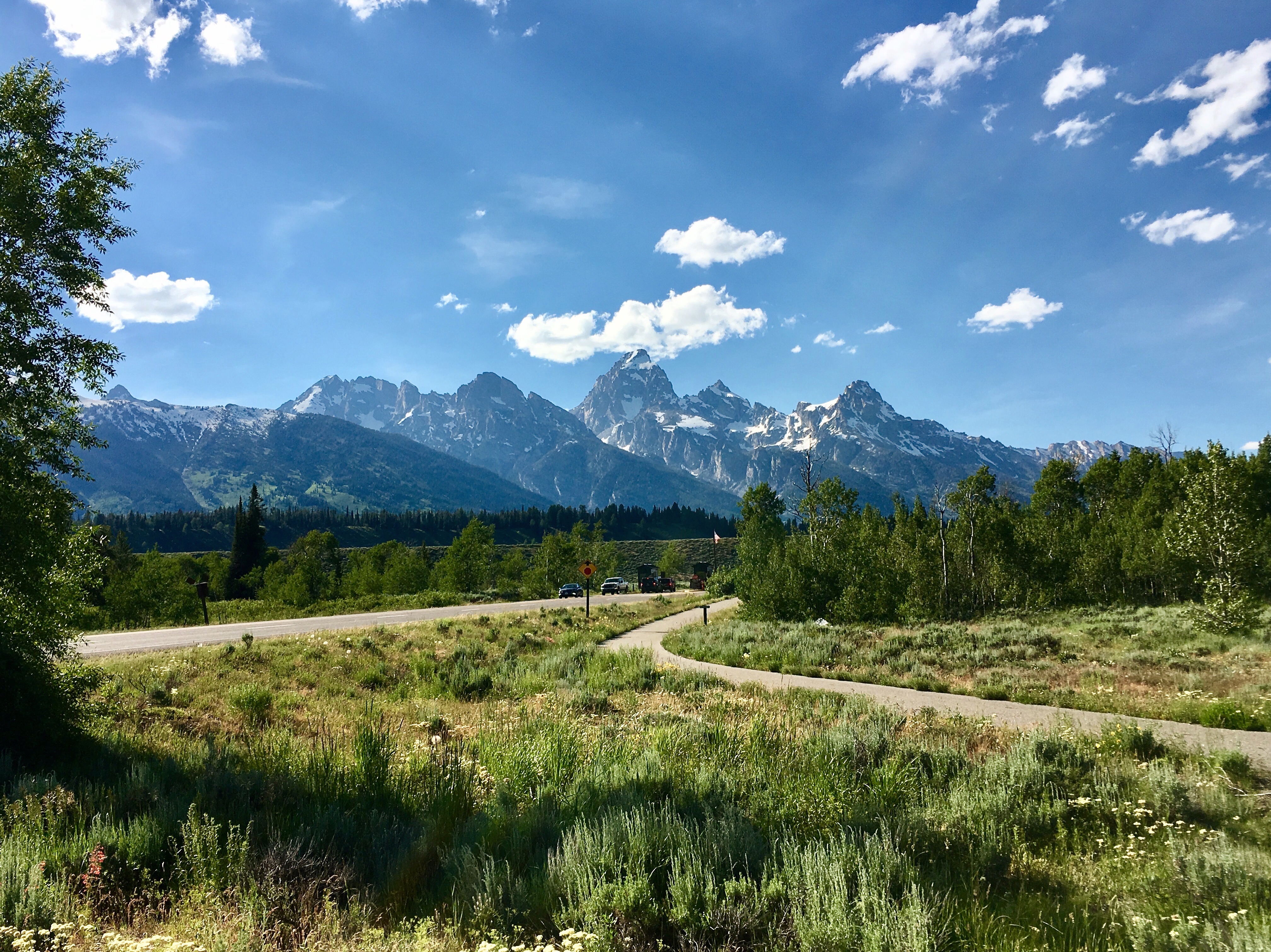 It’s been more than eight weeks since I first set eyes on them, and yet, I can still picture those striking peaks, their rocky ridges steeped in snow, their soaring summits shielding the Snake River Basin, like the bosom of a protective mother safeguarding her child.
It’s been more than eight weeks since I first set eyes on them, and yet, I can still picture those striking peaks, their rocky ridges steeped in snow, their soaring summits shielding the Snake River Basin, like the bosom of a protective mother safeguarding her child.
This was the Teton Range.
A sub-range of the Rocky Mountains, the Teton Range extends 40 miles long in Wyoming along the Idaho border, and is best known for its single most prominent pinnacle, the Grand Teton, named by French explorers who referred to it as ”the large teat,” according to Climbing Magazine. Perhaps those early fur trappers, like us, found that they simply could not look away.

I hadn’t heard of Grand Teton National Park until last year, when, as part of a tradition that my husband and I have started to visit national parks for our anniversary, he suggested we visit Grand Teton along with our intended trip to Yellowstone, since the two are so close to each other.
Thus, we charted a week-long trip with friends to these two national parks, flying into Salt Lake City first.
I had no expectations of the Tetons, and every expectation of Yellowstone; perhaps that’s why the Tetons left such a lasting impression. In the end, Yellowstone certainly lived up to the hype, with its vast, fertile valleys strewn with wildflowers and wildlife, and its steaming hot springs gurgling with long-winded warnings of a future eruption.
However, the Tetons took my breath away.
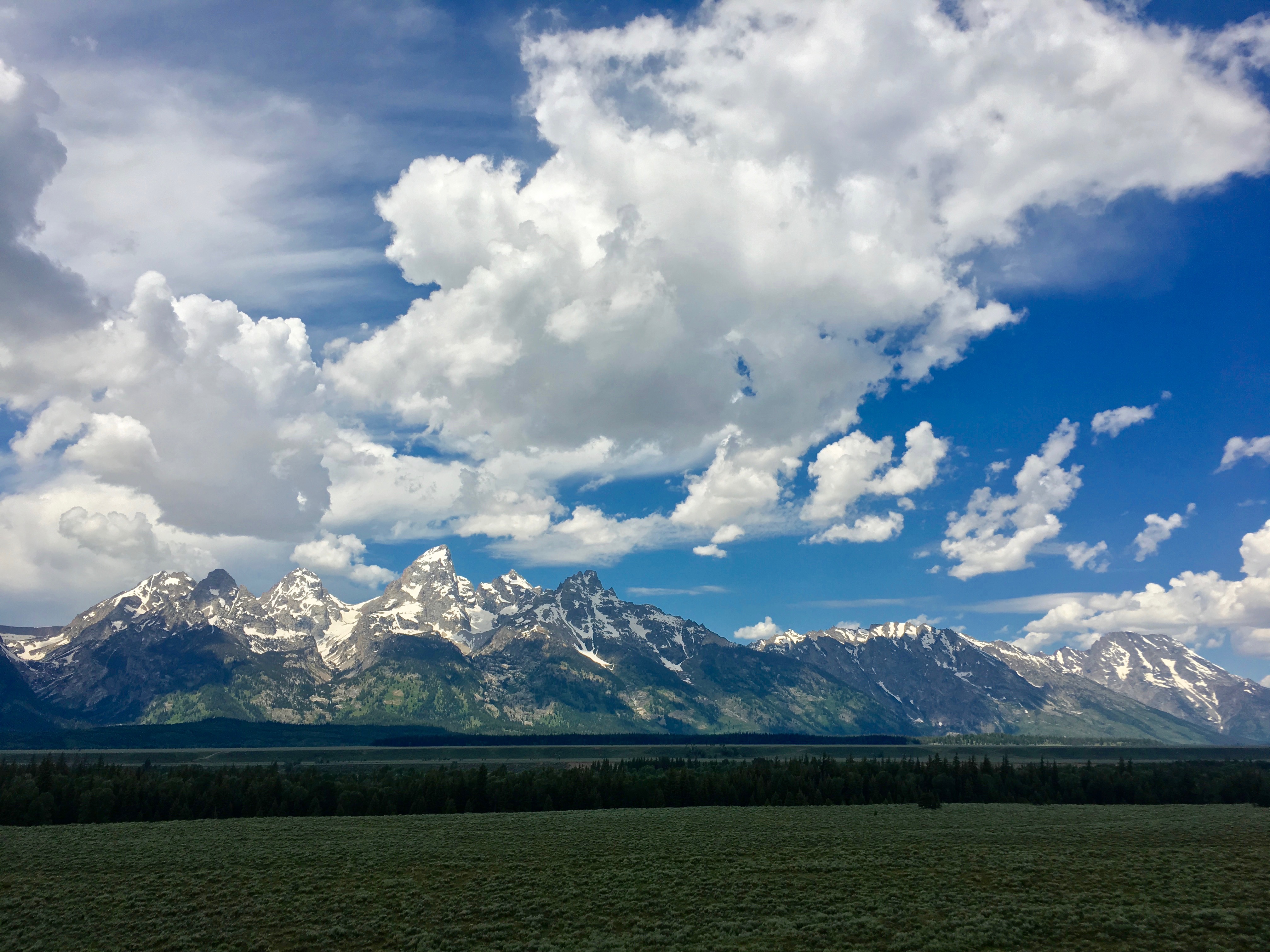
If I had to rank these parks, to me Grand Teton is far more scenic and wild because the untamed mountain range and valleys above which they hover transport you to the American pioneer era. Grand Teton seemed more pristine and less crowded, while Yellowstone’s history as the first national park and unique geothermal features make it a must-see site swarming with visitors.
With these two parks situated right next to each other, there’s no reason not to visit both if you’re heading to Yellowstone, even though the Tetons are formidable in their own right.
Here’s everything you’ll love about this park, and what made our trip unforgettable.
1. The Approach
The closest airport to Grand Teton is in Jackson Hole, Wyoming, and major airlines such as Delta, American Airlines and United fly there. However, these flights can typically be expensive, so we chose to fly into Salt Lake City instead, and that way, we could explore Salt Lake when traveling back on our last day.
From Salt Lake City, it’s about a 4.5-5 hour drive depending on which route you take, according to Google Maps:
- I-15N
- I-15 N & ID-34E
- I-80 E & US-89N
We rented a Chevy Tahoe from Enterprise Car Rental, stayed one night at the Hyatt Place near Salt Lake City airport, and left the next morning for Grant Teton.
We chose the I-80 E route, and picturesque would be the only way to describe this drive to Jackson Hole, the main tourist town near Grand Teton National Park.

We had not even driven one hour when we came across the Echo Reservoir and stopped for photos. It was a gorgeous day out. Being early in our journey, we didn’t realize that these landscapes would pale in comparison to the scenery we would witness just hours later. As we approached Jackson Hole, the terrain grew more wooded and rugged.
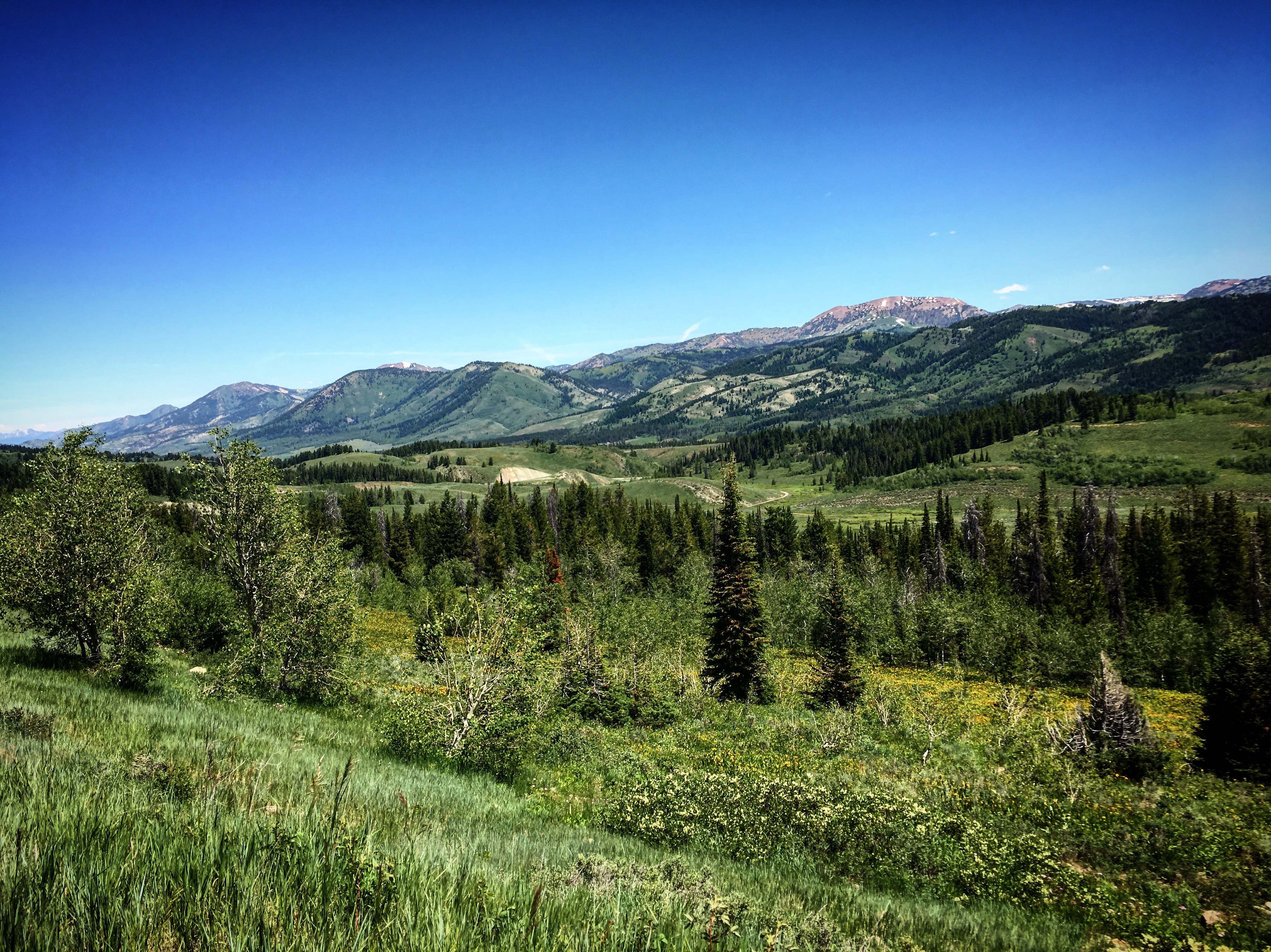
2. The Accommodations
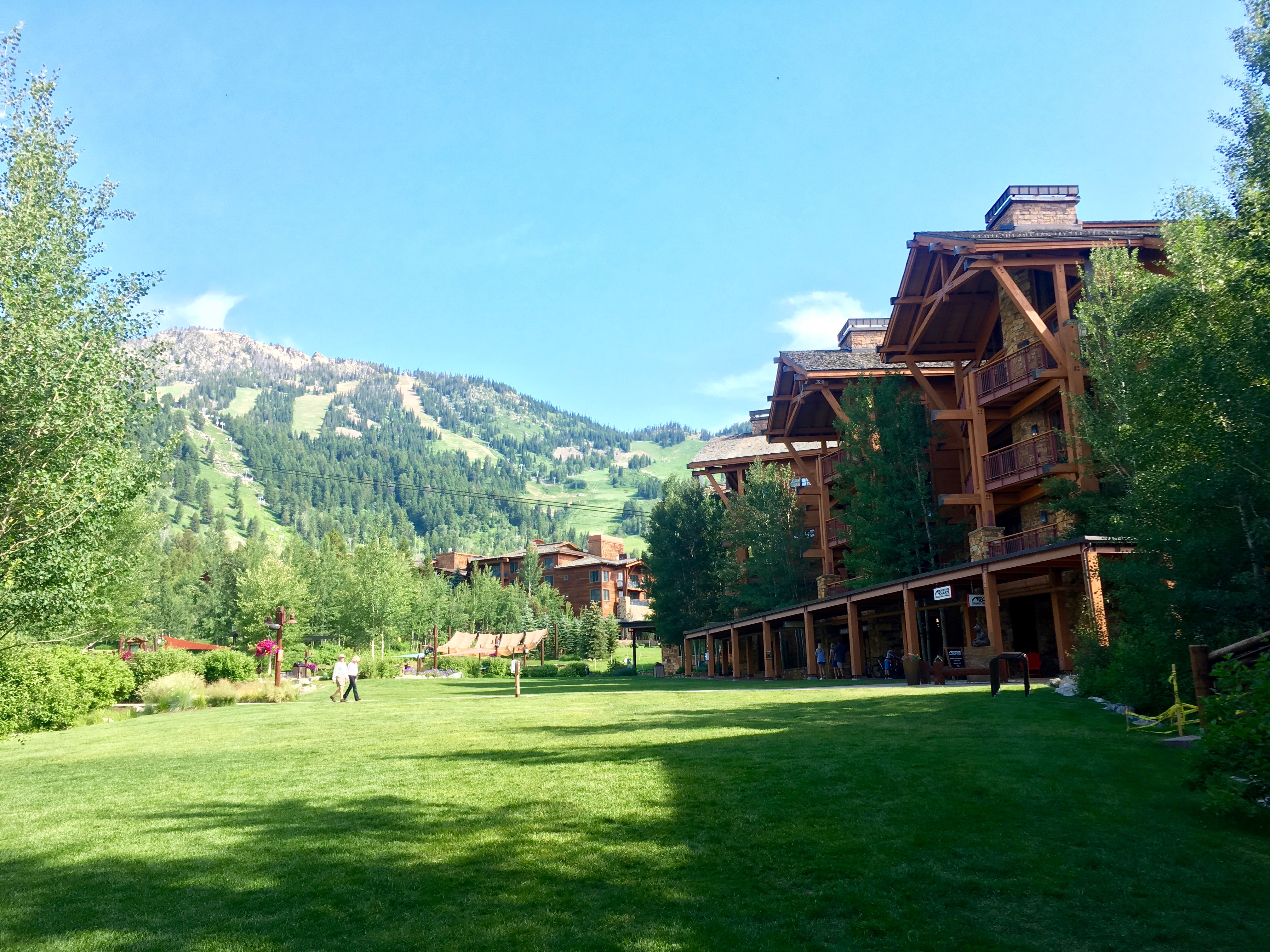
Teton Village, a subsection of Jackson Hole, is a ski resort town that sits at the base of the Teton Mountains and has many places for visitors to stay at different price points. At the luxurious end of the spectrum are the Four Seasons, Teton Club, and Hotel Terra, and at mid-range are the Snake River Lodge & Spa, Alpenhof Lodge, the Inn at Jackson Hole and others. All of these accommodations are right next to one another in the village, so on July 3rd night when the Four Seasons set off fireworks, guests at all lodges were able to enjoy the show from the main lawn of the village square.
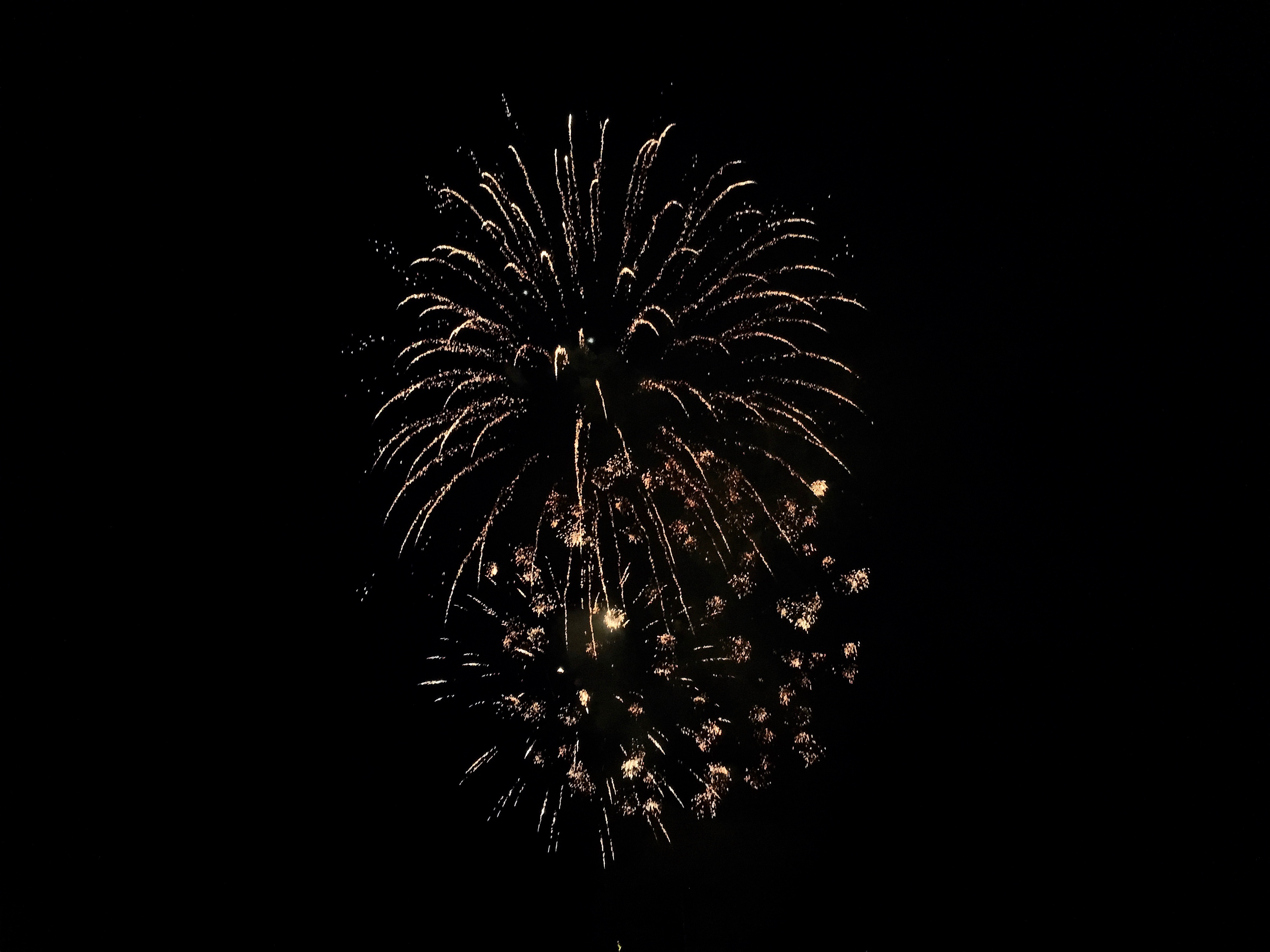
Since we’re not campers, but also like to stick to a modest budget, we chose humble accommodations that would simply serve as a place to shower and sleep at night, but ended up including basic hotel amenities that made our stay comfortable. This rustic lodge, The Hostel, proved to be quite clean, comfortable, and convenient.
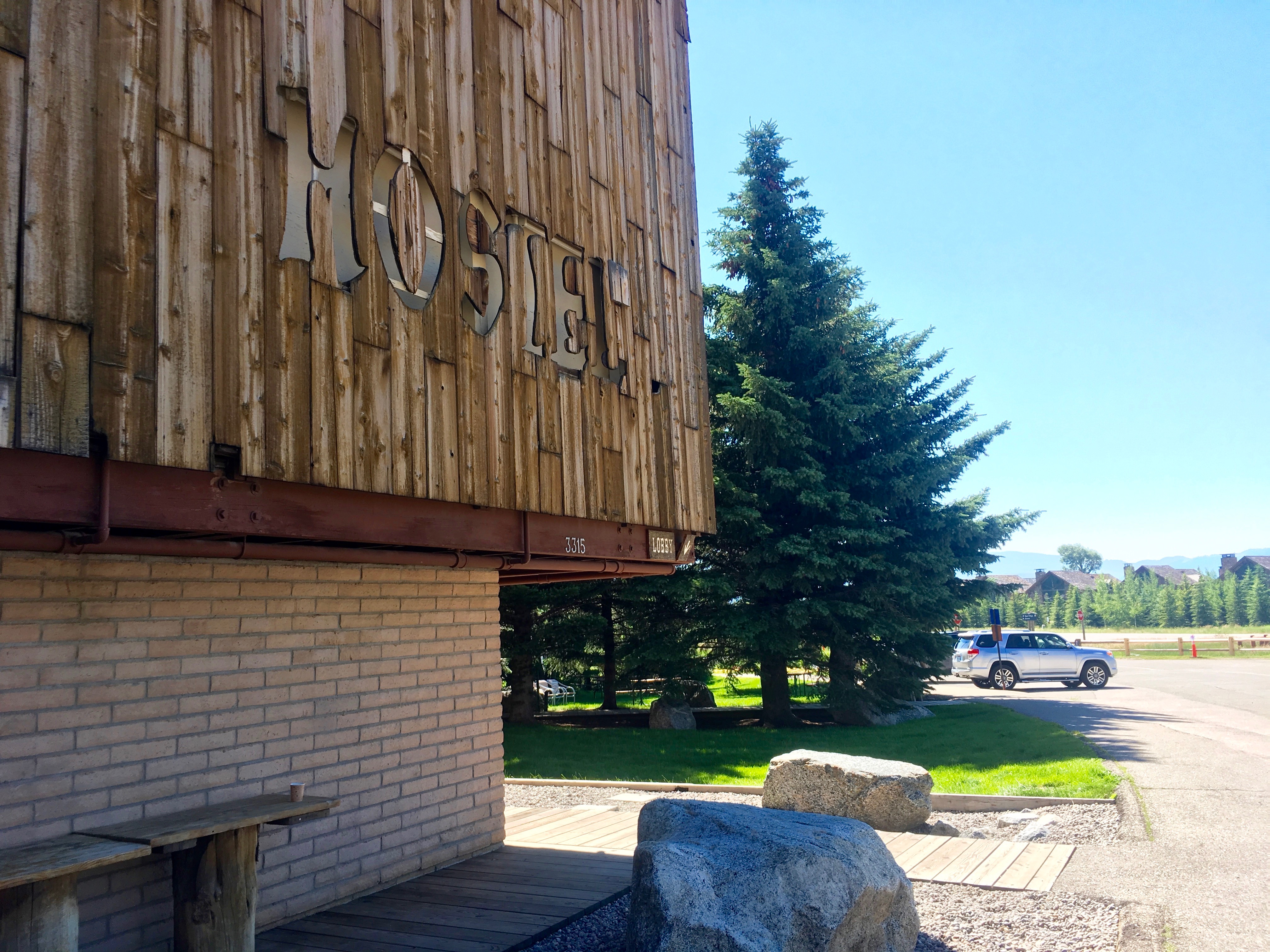
The building had free Wi-Fi, and the common area was filled with board games, pool table, shuffle board and a sitting area by the fireplace where guests could read. While we didn’t have much of a chance to make use of these amenities because we spent most days out in the park, we did enjoy the complimentary tea and coffee dispensed by the friendly staff in the main lobby. This is also where you could collect packets of soap and shampoo (though we had brought our own). It was at the suggestion of one of these front-desk receptionists that we headed to the Taggart Lake Trail upon arrival the first day, and it did not disappoint.
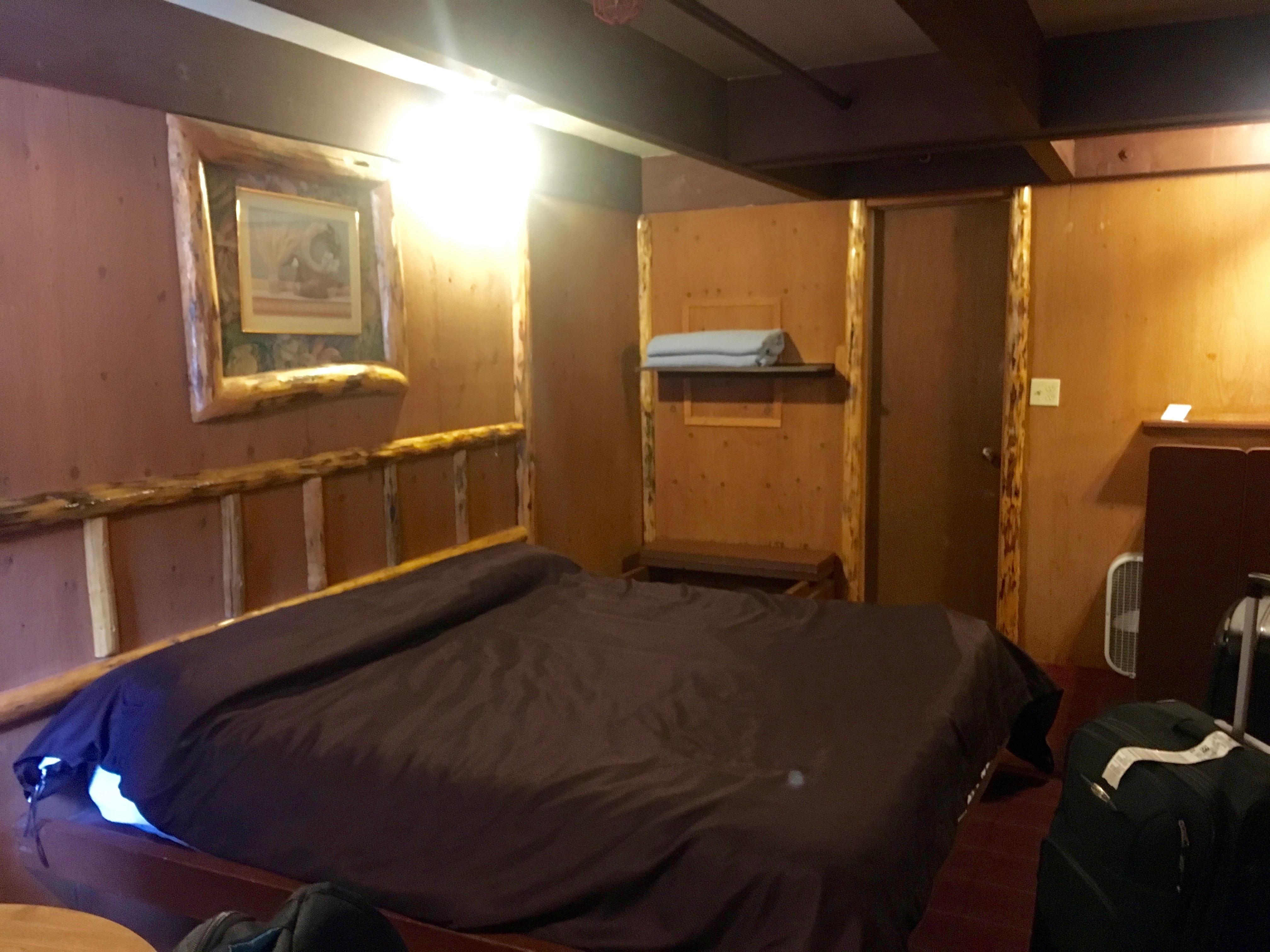
Things to Do
3. Taggart Lake Trail
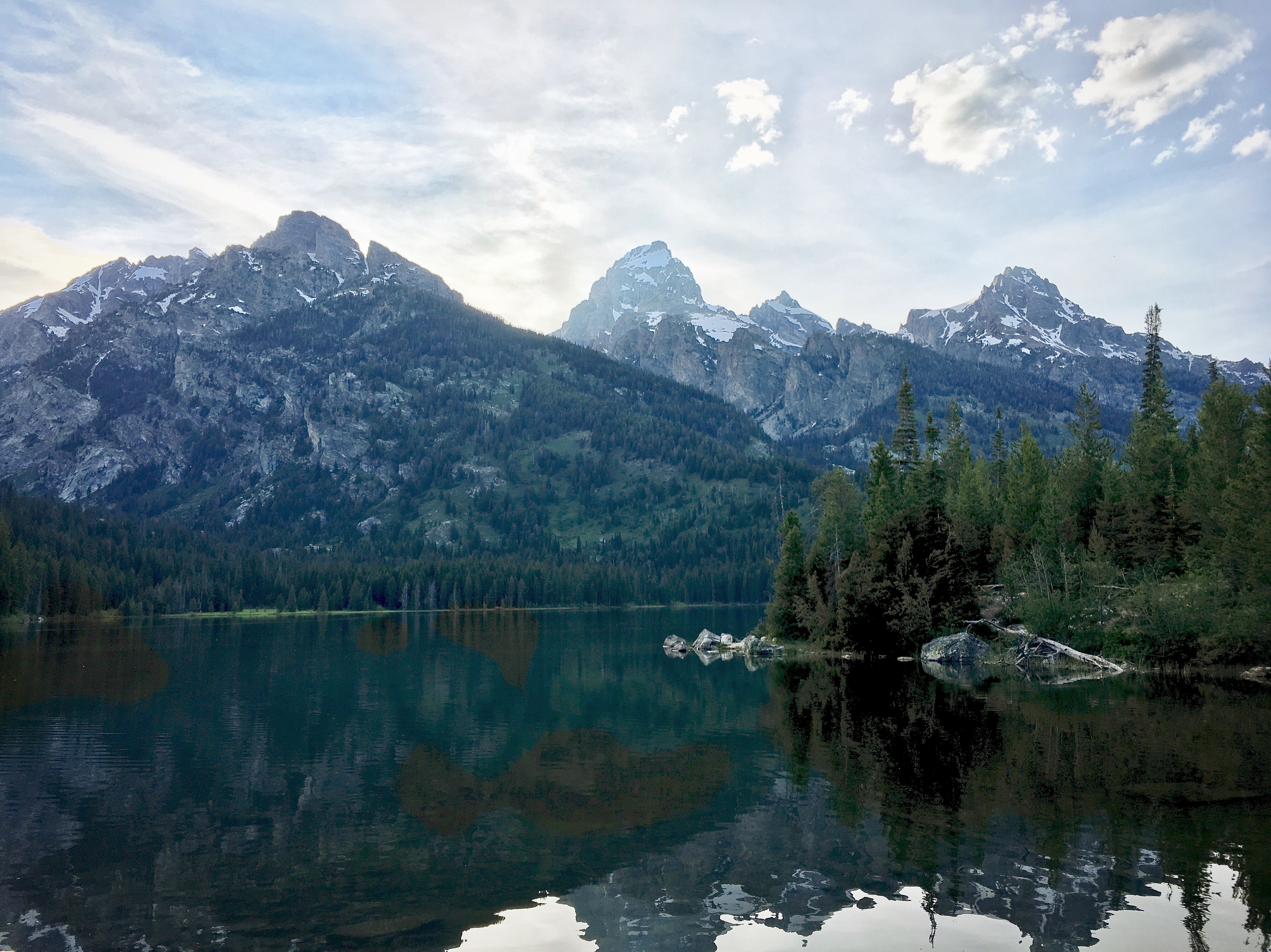
On a quest to see wildlife in Grand Teton National Park, we asked The Hostel’s receptionist where we were likely to see bears. She suggested a few spots along the main loop in the valley, but one seemed ideal due to its proximity and trail length. Plus, bears had just been spotted there hours ago, she said. It was about 4 -5 p.m. when we arrived at The Hostel, so we didn’t have time for a lengthy trek. At only 3 miles round-trip, this easy trail seemed perfect as a late-afternoon activity.
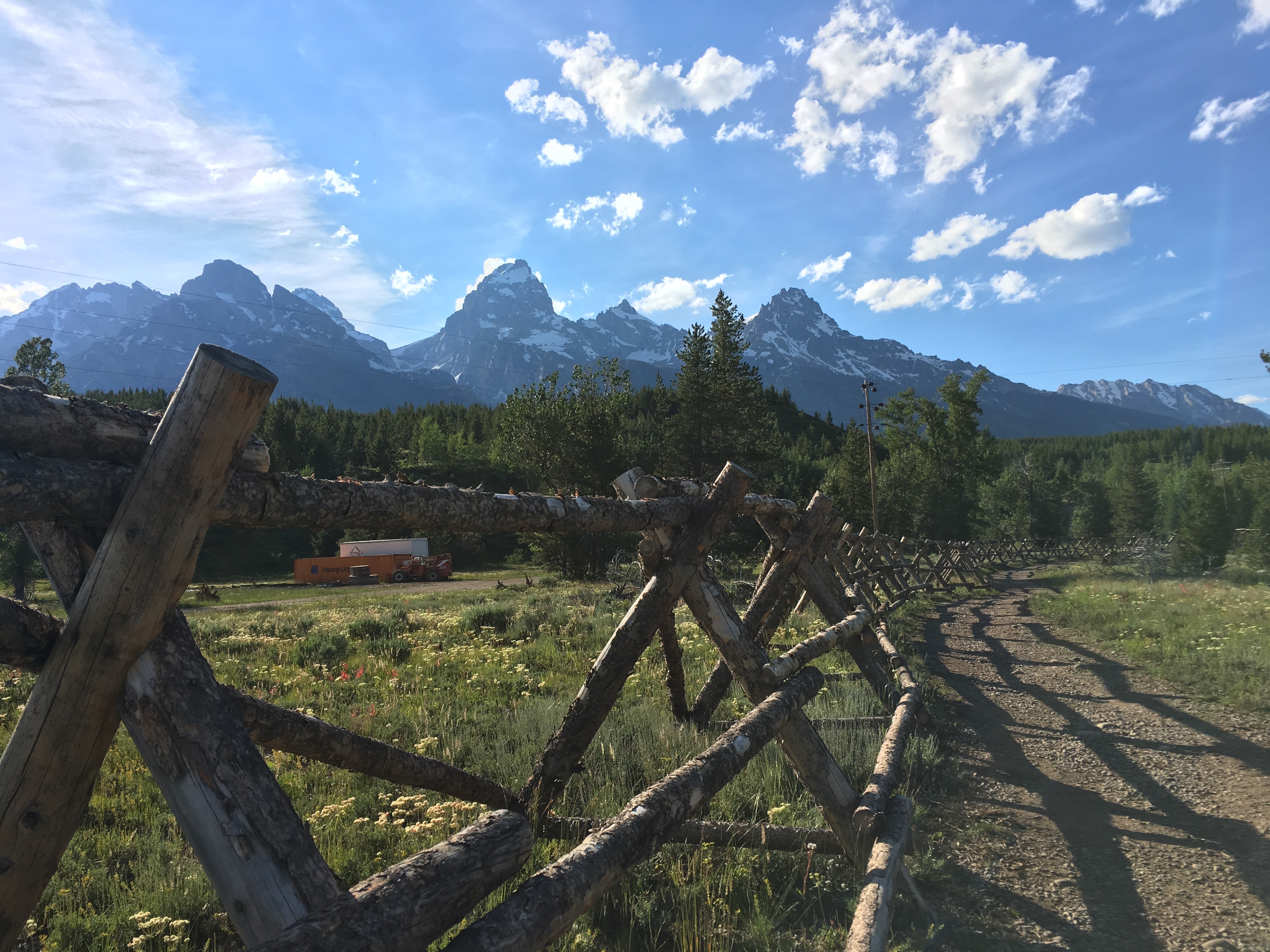
We were greeted at the trailhead by lavender, yellow, and flame-red wildflowers.
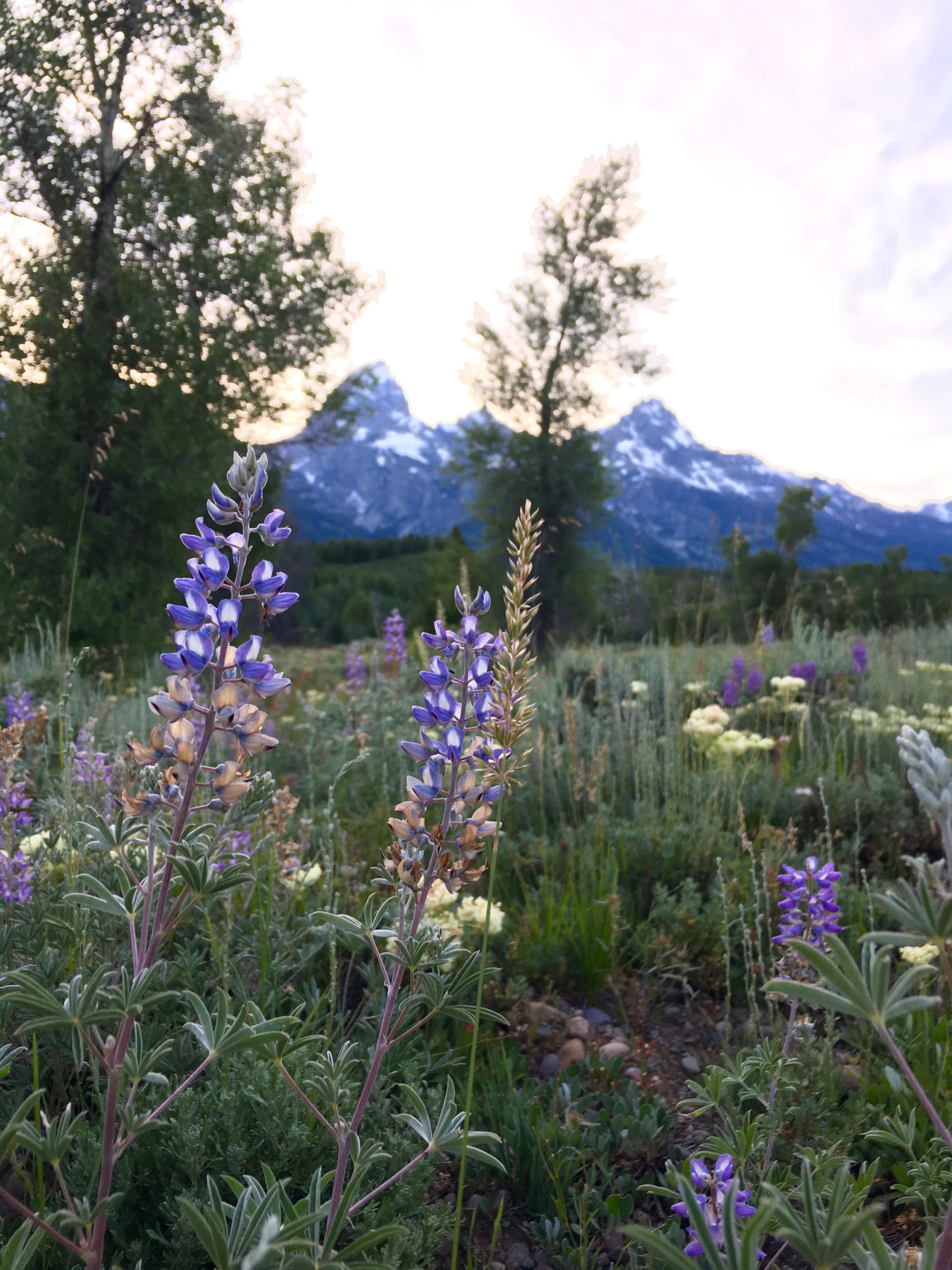
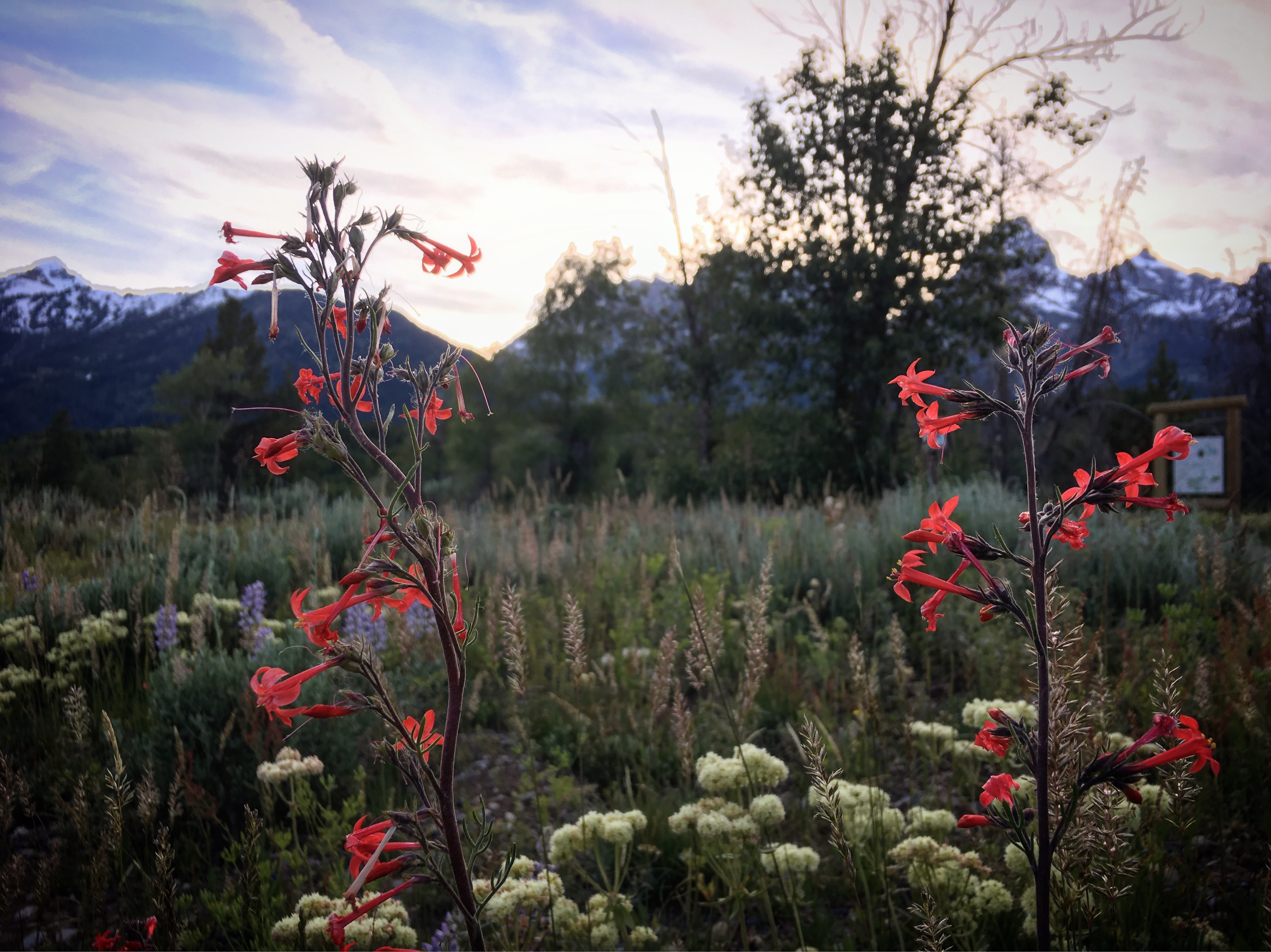
Aside from perhaps two other hikers we encountered along the way, the path was empty and quiet.

We crossed a wooden bridge over Taggart Creek early in the trail, and passed through a lengthy meadow where we stopped frequently to take photos of the Tetons as the sun shone behind it.

However, with the prospect of encountering bears in the dark imminent, we scurried onward to make it to the lake while there was still light in the skies.
The view we witnessed when we got to the lake was like something from a dream.

Not a single person was around. The lake stood still, merely mirroring the Tetons that loomed above it.
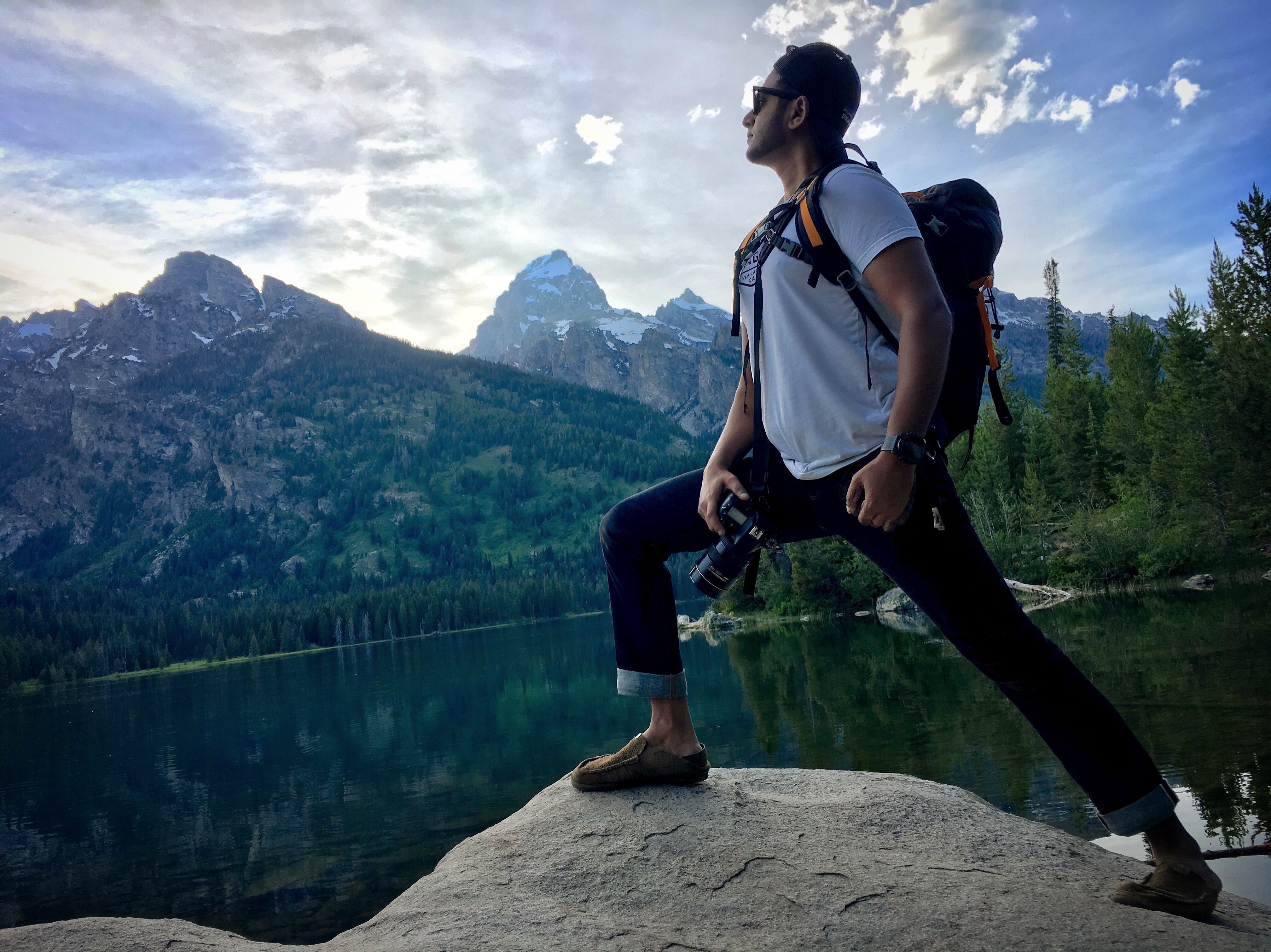
Eventually, as the sun slipped further behind the mountains, the whining of mosquitoes by our ears grew more noticeable. We headed back along the trail towards the car, stopping at the creek again to relieve our feet in glacial water so cold that my feet were stung numb for the few seconds at a time that I could bear to keep them submerged.

4. Grand Teton Loop
On Day 2, we set off to drive the roughly 40-mile main loop that circles through the valley. It’s the most convenient way to see the major points of interest, and there are several stops where cars can pull over to take photos, because trust me, you won’t be able to resist.
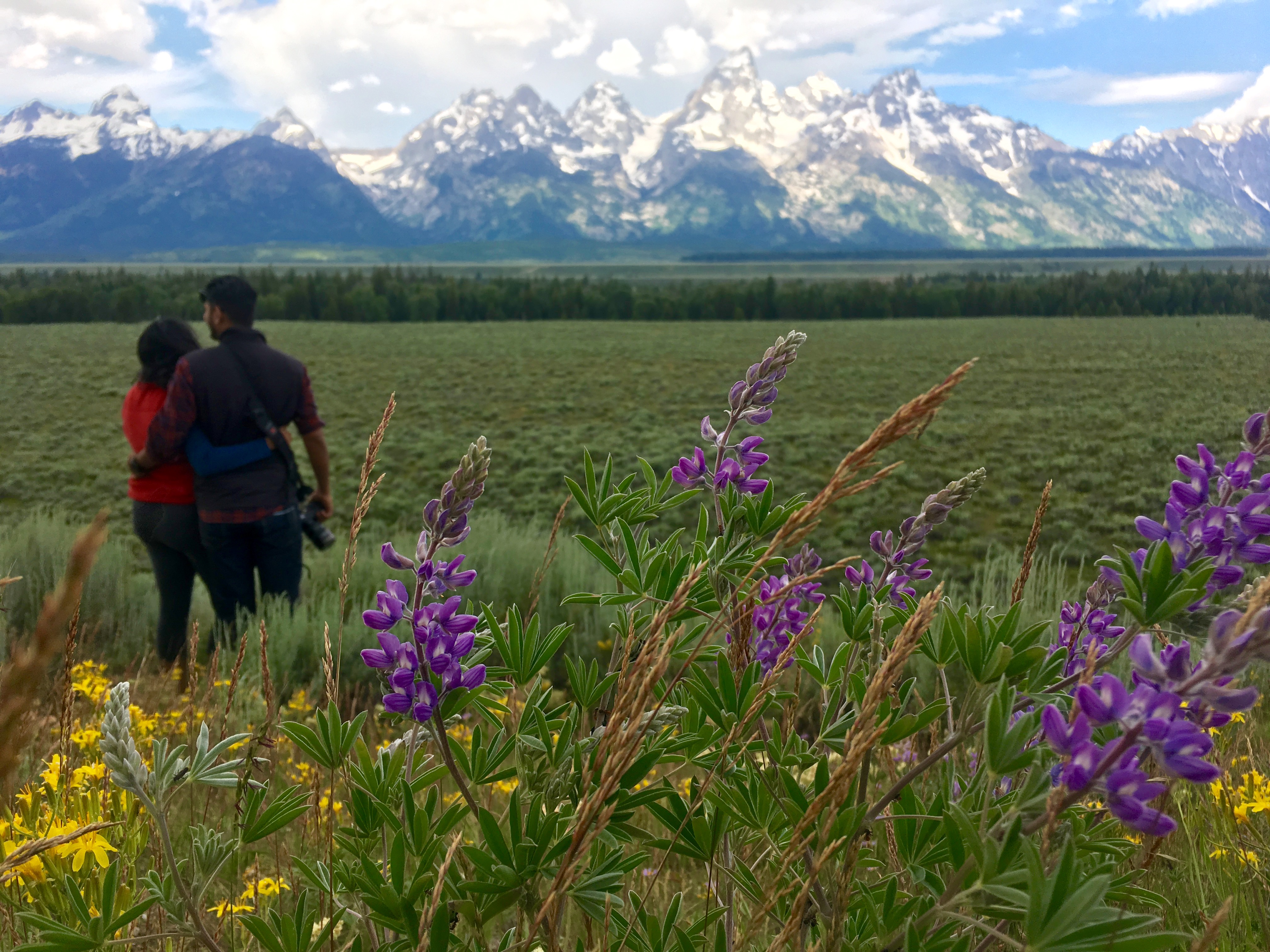
Along our drive, we paused at several scenic overlooks, including a horse ranch, and viewpoints of the Snake River Valley, Jackson Lake Dam and Jenny Lake. The water is so clear here that you can see straight to the bottom.
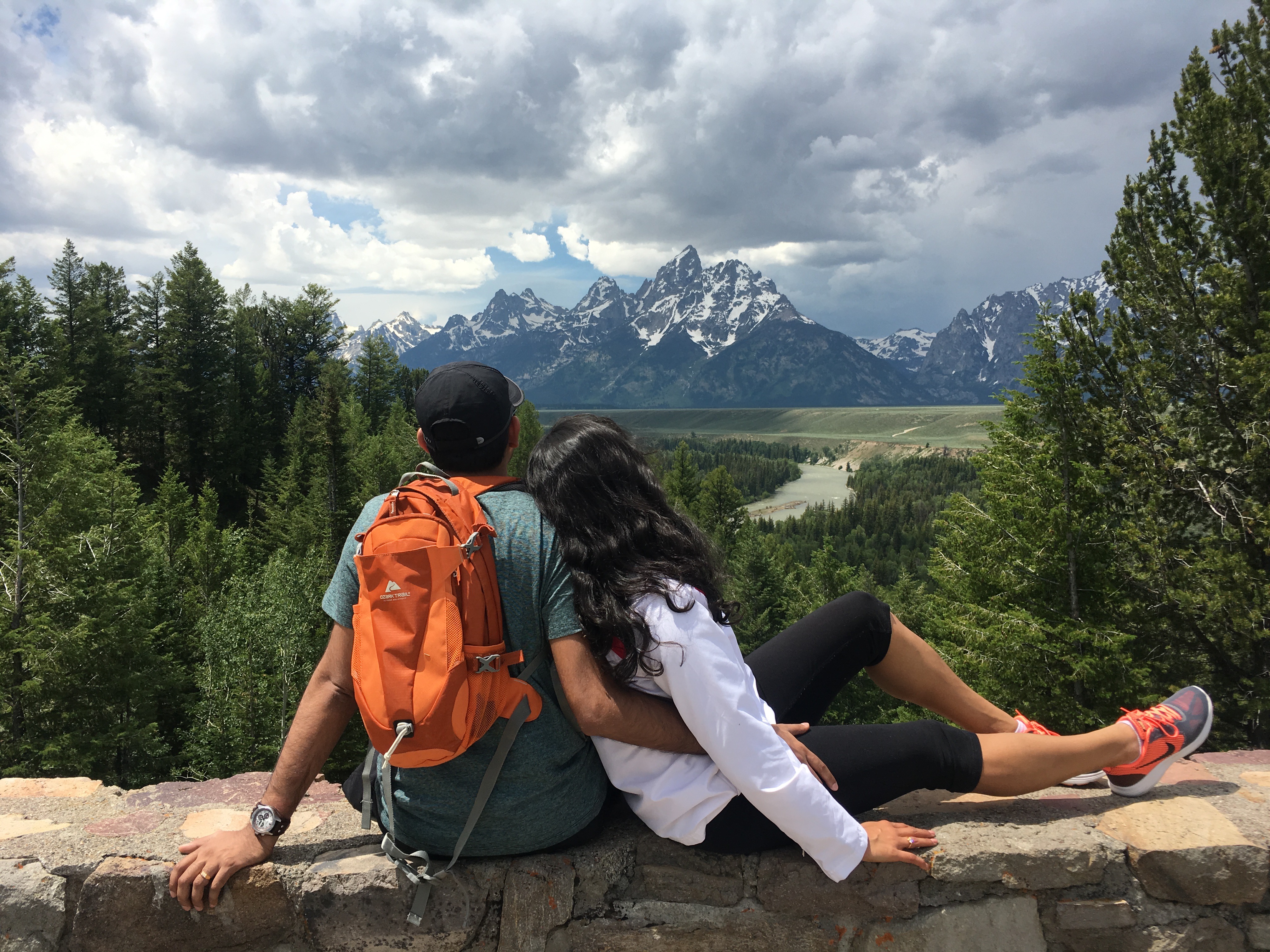
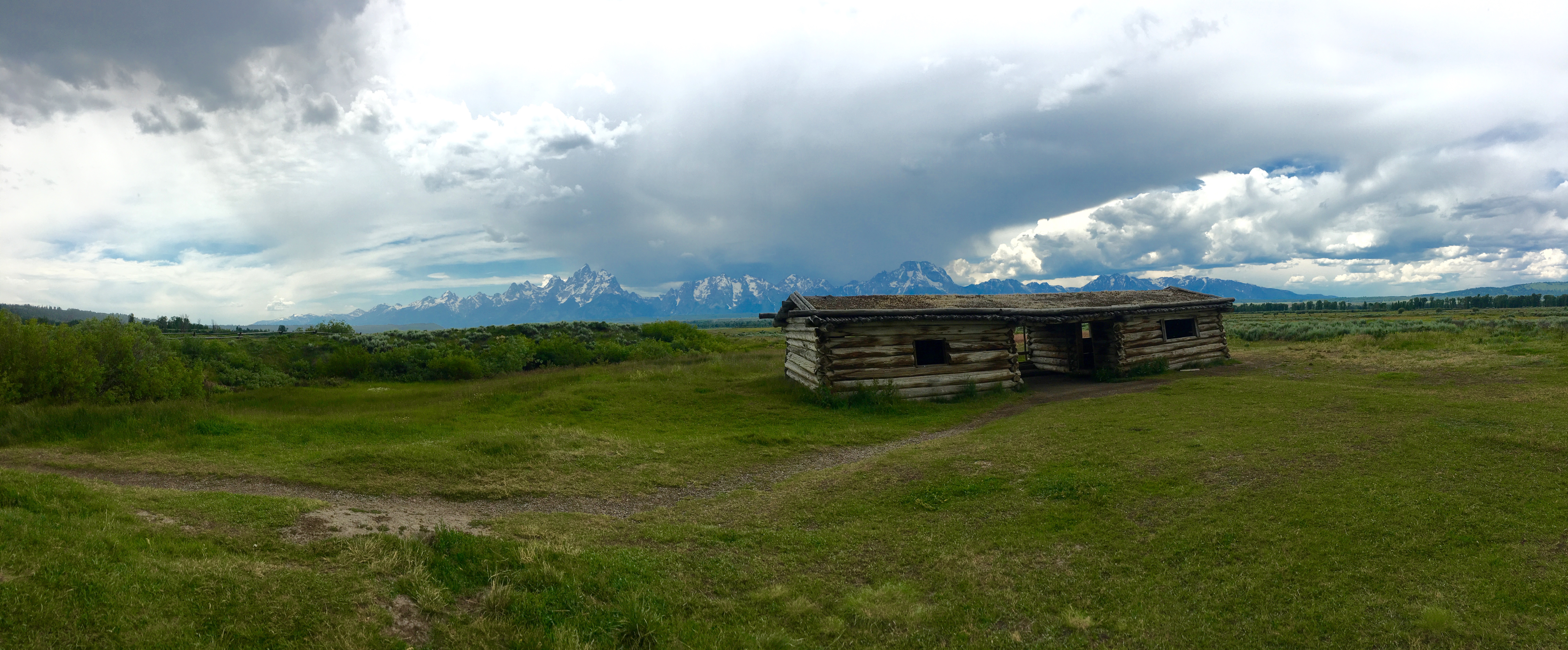
On the return drive toward Teton Village, we saw a herd of bison in the distance. We tried to get closer, while still maintaining the 25-100 yards required by the National Park Service. Little did we know that just a few days later, we would see hundreds upon hundreds more bison in Yellowstone, and within just a few feet of our car!
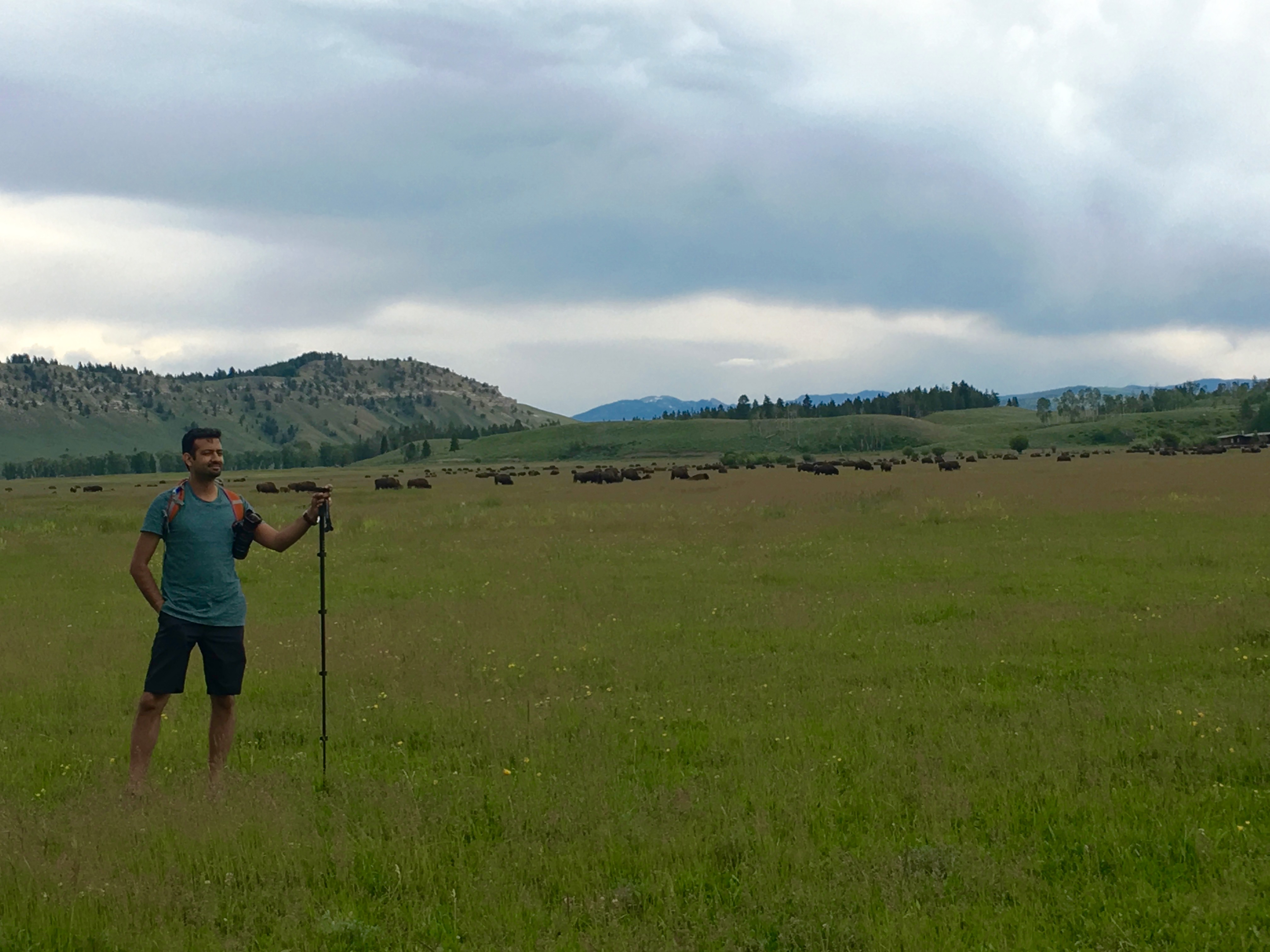
5. Mormon Row
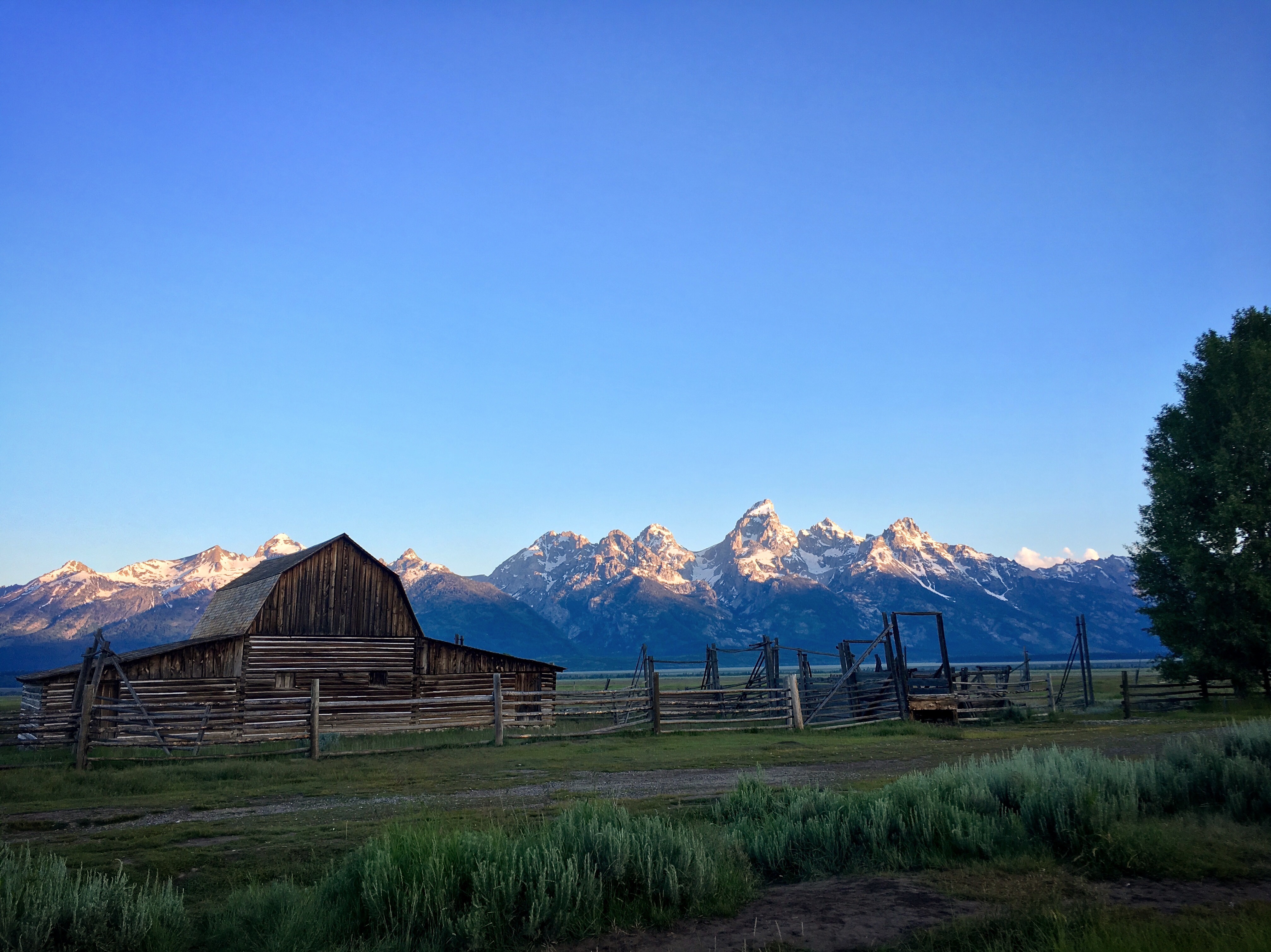
On Day 3, we woke up before sunrise to head to Mormon Row, a popular site for photographers who want to capture the light of the early morning sun illuminating the snow-capped peaks of the Tetons.
Mormon Row, so named for the Church of Latter Day Saint settlers who came to the valley for its relatively fertile lands, is a flat area below the Tetons with about 20+ homesteads. Now, some of these homestead lands surrounding Mormon Row seem to have been turned into ranches and cabins where visitors can book a stay. Others remain empty, abandoned structures that serve as props in photographers’ portraits.
On the quiet drive there, we saw a herd of elk grazing, and we marveled at the majesty of their silhouettes against the backdrop of a technicolor sky.

Despite it being peak summer season, it was chilly out. About a dozen photographers were already huddled in the valley, gripping mugs of hot coffee, their lenses pointed toward the peaks, waiting to snap at the coveted golden hour.
Once the crisp morning air began to temper and the sun was completely out, we stopped for a quick breakfast at Dornan’s Chuckwagon, assembled sandwiches, and started our hike to Surprise Lake.


6. Surprise Lake Trail

Given that this wasn’t the trail I had originally planned, I’d say the name fits.
Before the trip, I had identified a list of trails I wanted to do based on the scenic opportunities they offered, and the likelihood of seeing bears, which was a priority for me. But at the insistence of the avid hiker in our midst, we ended up doing the Surprise Lake Trail, which probably ended up being more effort, but totally worth it.
It took about 5-6 miles full of switchbacks to get to the lake, but at least I was treated to the fragrant, floral hillsides that uncovered clear views of Jenny and Leigh Lakes along the way. It was a bright, clear day, and as the day warmed, we started removing layers. Though there were no bears, we did see some elk along the trail.
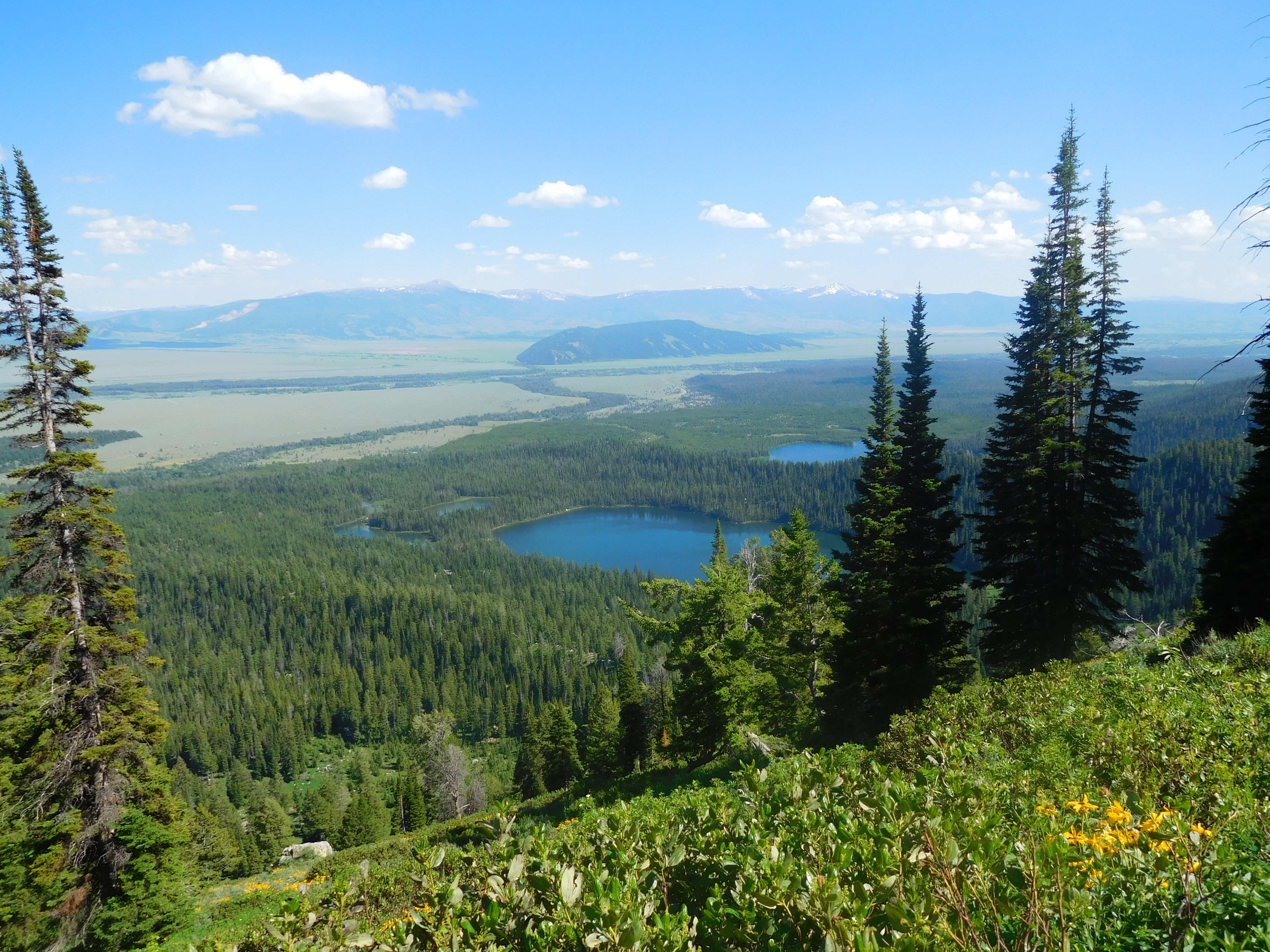
The last mile or so involved slipping through some snow and ice, but thankfully, I’ve had enough practice butt-sliding through sludgy trails from my time in Guam’s lush jungles.
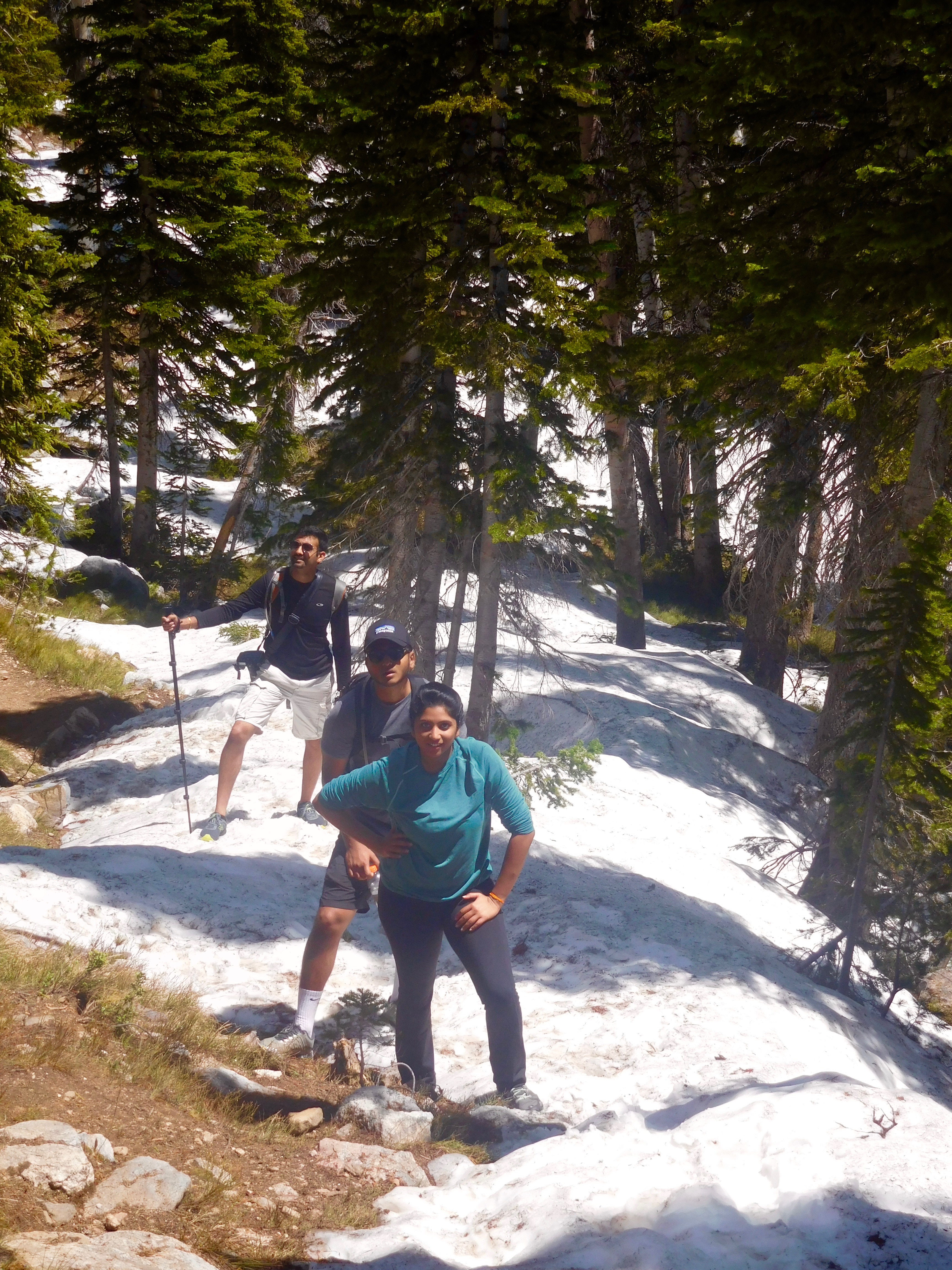
After we trudged across the final velvety stretch of snow, we found ourselves in the midst of a winter wonderland in mid-summer. Here at the lake, we stopped to rest, to eat, and gaze in awe at the type of beauty that only Mother Nature can create.
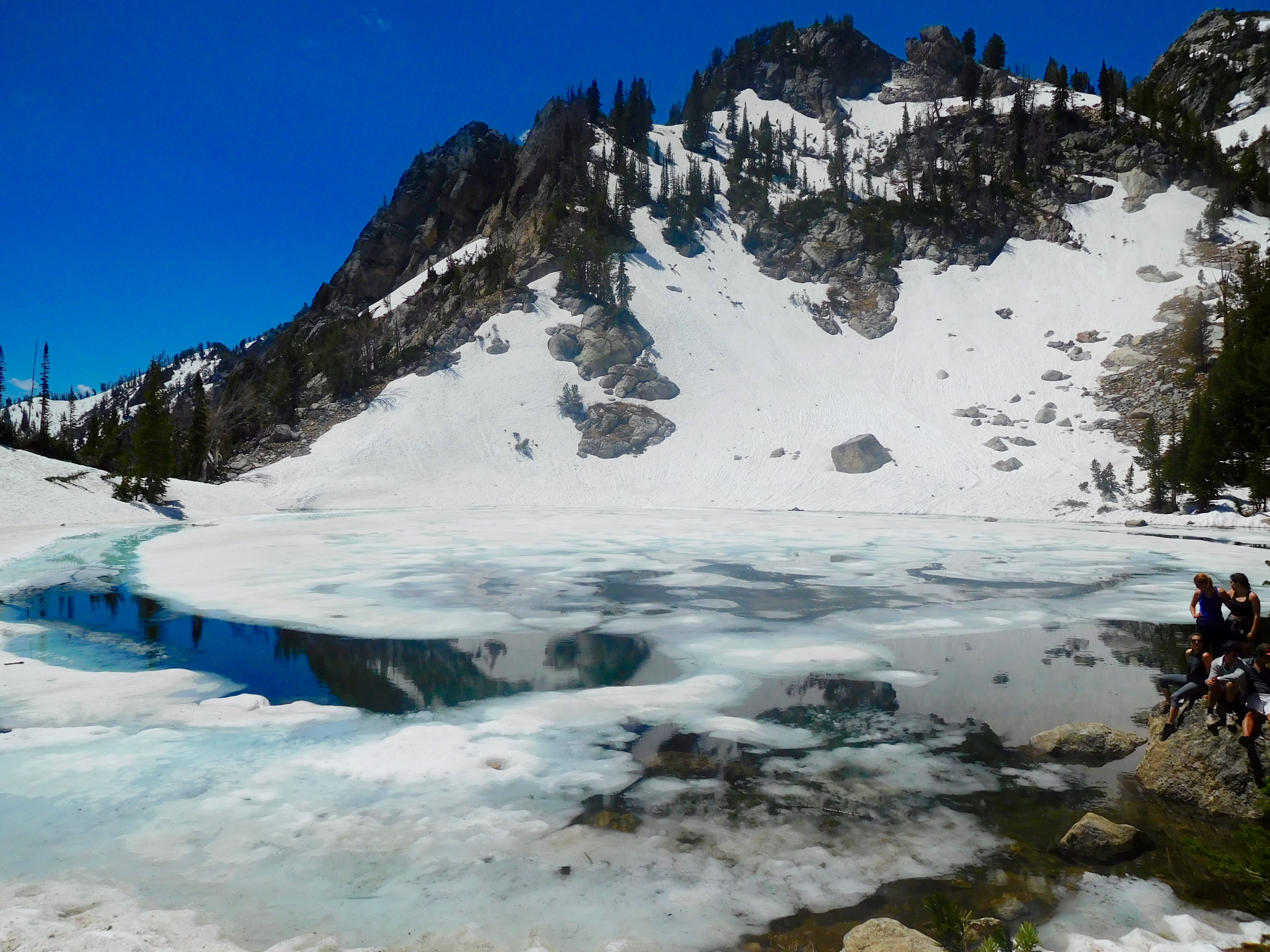
7. Jenny Lake Scenic Drive
This is a short road that runs along the edge of Jenny Lake and provides scenic views of the Tetons. It’s a quick and convenient way to catch views of Jenny without having to do a full trail.
Plus, we were told that this is a common spot to view bears as well, if you drive it frequently, though we did not see any. After driving this a couple times on the last day, we headed to dinner.
Dining
After a full day of exploring, these are some of the best places to grab some grub and libations.
8. Breakfast at Mangy Moose
The Mangy Moose seemed to have some of the best vegetarian and healthy options for breakfast, but also a diverse spread of food for people looking for sweet and savory breakfast dishes. We ate here twice, and both times the food was delectable.

Vegetarians: I recommend any of the breakfast bowls like the granola or acai. The avocado toast proved to be too generous a serving of avocado for me.

The Chuckwagon at Dornan’s has a barebones breakfast menu, so I wouldn’t recommend it for starting your day, but I managed to order a bowl of berry granola that was pretty good.
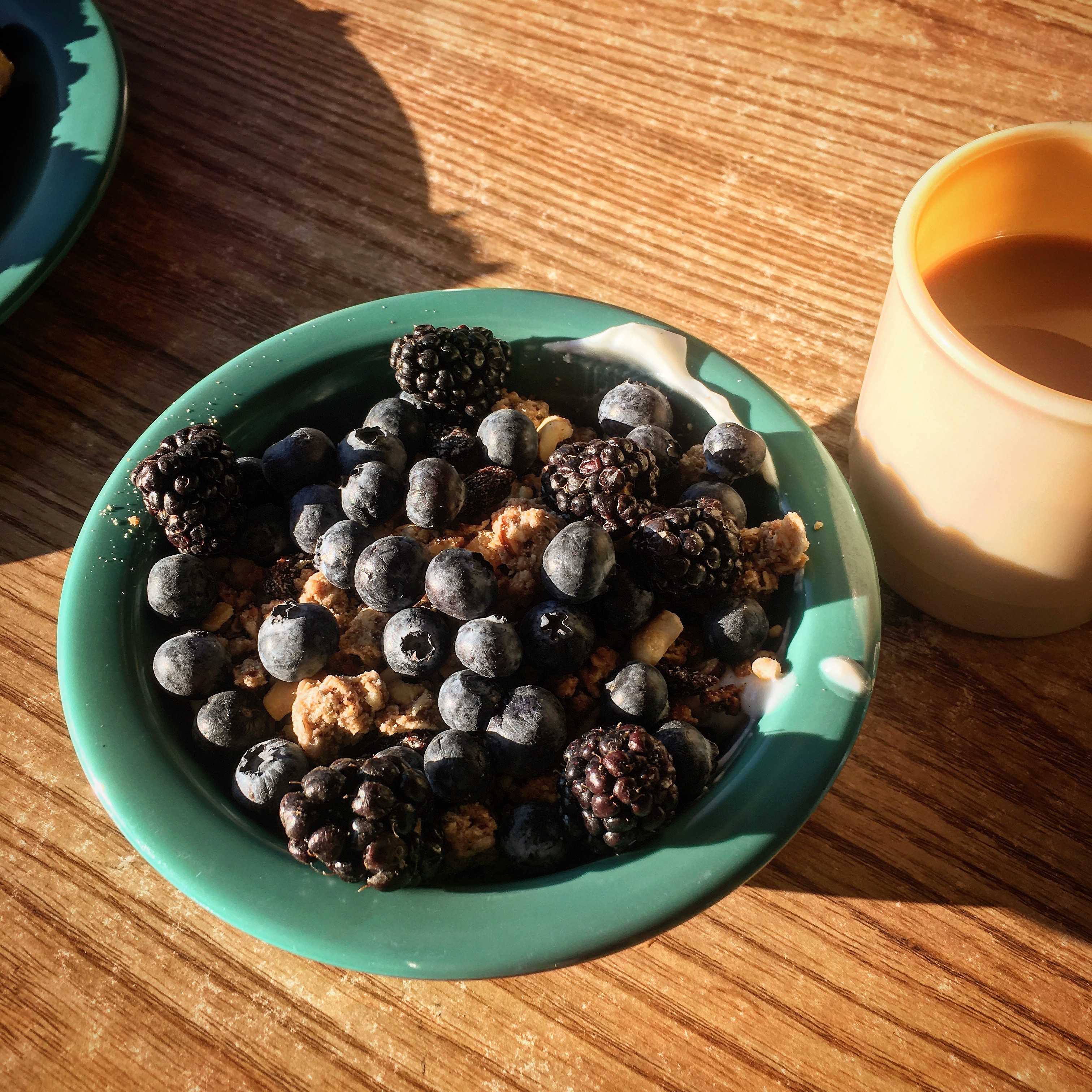
9. Dinner at Dornan’s
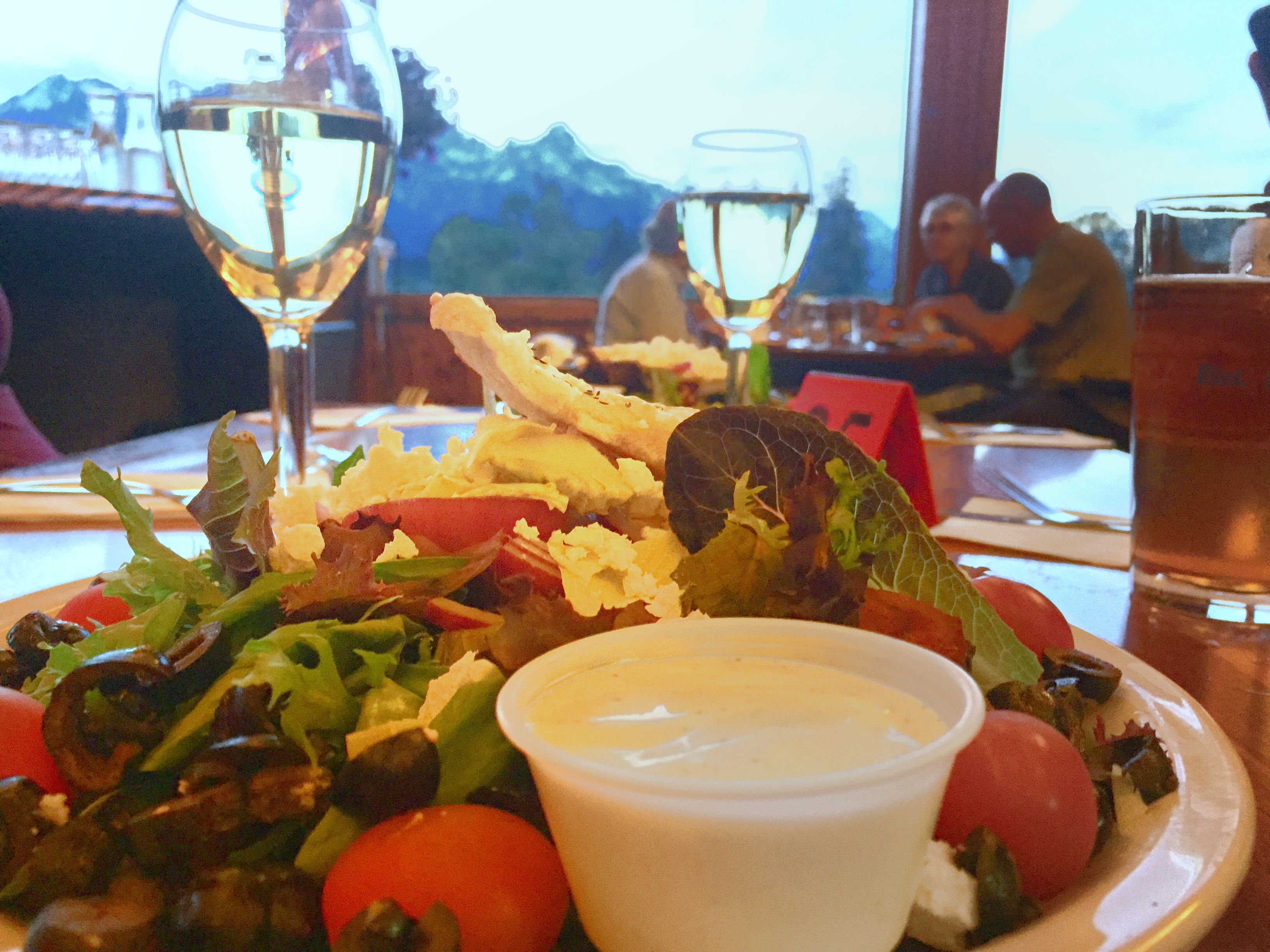
For delicious dining with a view, Dornan’s Pizza Pasta Company does it right. We ate here two nights, and food was delicious, affordable, and hey, the view didn’t hurt either.

By evening, this place buzzes with visitors who have spent most of the day in the park, but you can still always find a seat. Over thin-crust pizza, family-size salads and a mellowing glass of wine, we’d reflect on all of the magical things we had seen in the park that day, and plan for the next day’s adventures.
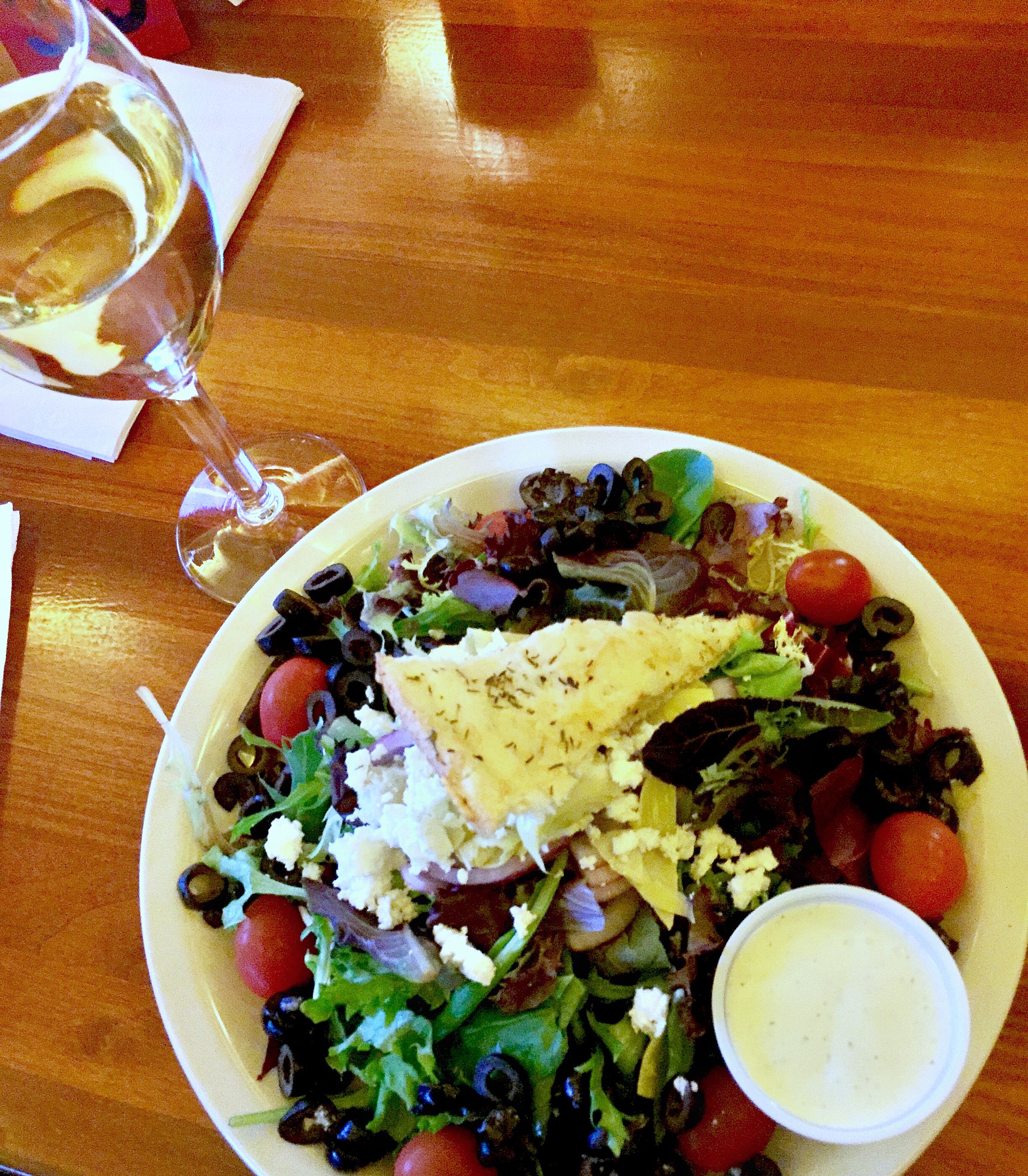
10. Bevvies at Bistro

On Day 2, we took the Bridger Gondola from Teton Village up to Piste Mountain Bistro, and essentially found out, you’re paying for the view. This is a chic bistro that provides panoramic views of Jackson Hole and an upscale menu, but for vegetarians there’s very little choice.
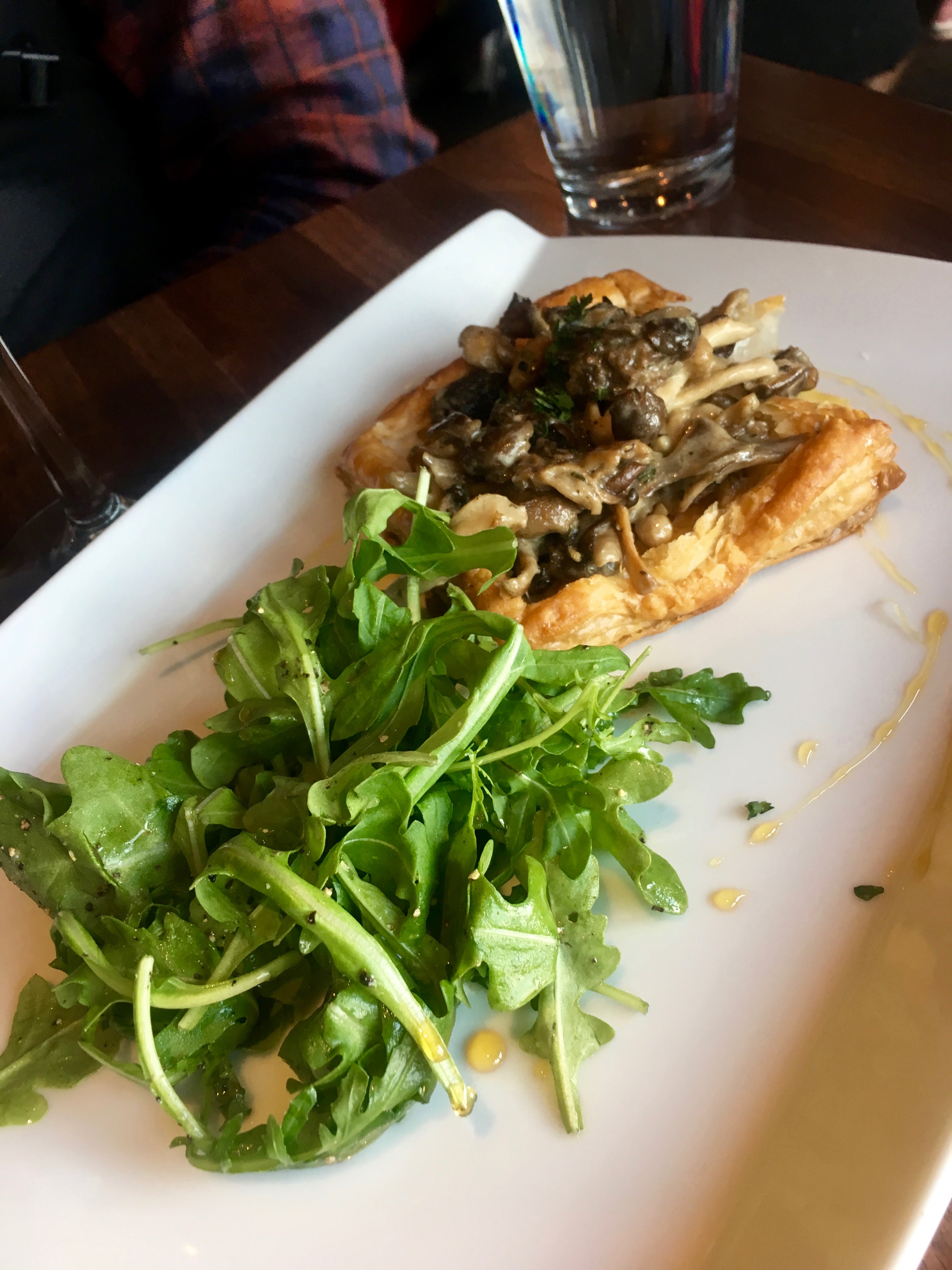
We had to stick with starters and filled up on bread, but the bottle of merlot we split as a group made up for the food. My suggestion would be to go here after a full day of adventures. Take the gondola up and let the wine wash over you as you watch the sun set over Jackson Hole. Then, head back down to the town for real, satisfying meal.

Wish We’d Done it
So there you have it: If you’re planning a trip to Yellowstone, there’s no excuse for not stopping in Grand Teton as well! Even for us, there were things we didn’t get to see during our short visit. Missing from this list, and which I wish we had done, are a hike up to Signal Mountain, the Two Ocean Lake Loop Trail (possibility of bears!), Amphitheater Lake (if we had progressed beyond Surprise Lake along the same trail) and dinner at Teton Thai, since we were craving curry after a couple days anyway.
But that just gives us a reason to go back to this magical park once more.
… As if, after all of this, we would need to justify it.
Show Me Your Tetons!
I want to hear from you about your Teton experience! What did you enjoy most during your visit to Grand Teton National Park? I certainly plan to go back and explore this wilderness more, and would love to get more recommendations and stories of what you enjoyed most! Leave a comment or message me!
5 Comments
Comments are closed.












[…] had started a weeklong trip first in Grand Teton (a must-see in its own right, see why we love it here) and proceeded on to Yellowstone. The small excerpts you read in grade-school textbooks and the […]
[…] travels took us to Nashville, Miami, New York, Grand Teton and Yellowstone National Parks, Salt Lake City, and Alaska, but there were also blog posts […]
[…] the thrill and views did not match those we experienced in Grand Teton and Yellowstone during high season in July, there were still benefits of visiting before the […]
Very interesting article, my husband and I are planning a trip there this summer. We are renting a motorcycle and touring grand Tetons, Yellowstone Glacier, then possibly a day in Canada at Banff. We are older, not hikers, so probably won’t make Surprise Lake Trail, but hopefully we will see some wildlife. Each year, we too take a trip to one of our beautiful State parks (which usually ends up being two or three) One thing we have found to be extremely helpful is the Gypsy Guide app. I look forward to reading more of you adventures. Pattie Jones, Ferriday, La
[…] 10 Reasons to Love Grand Teton National Park […]